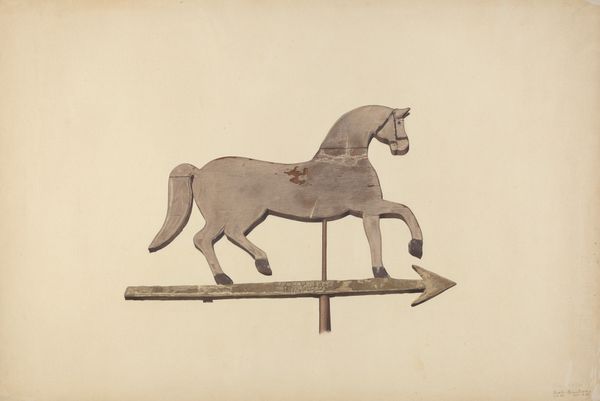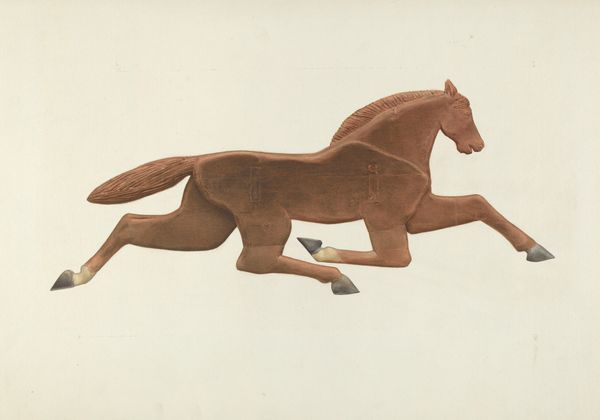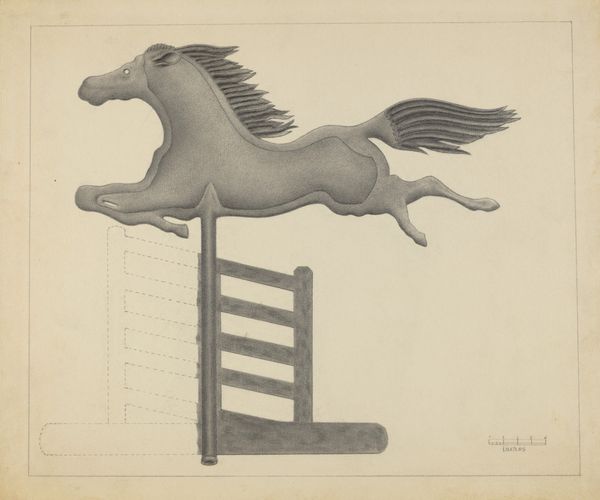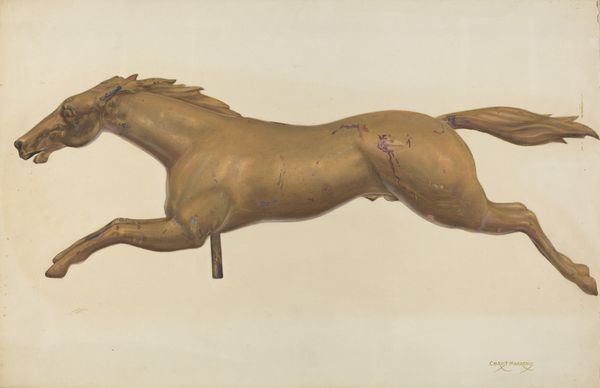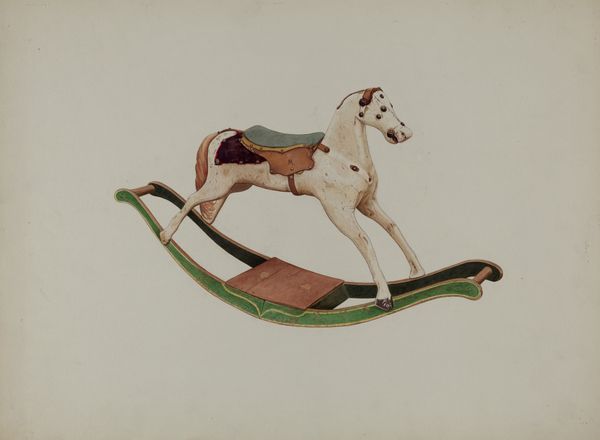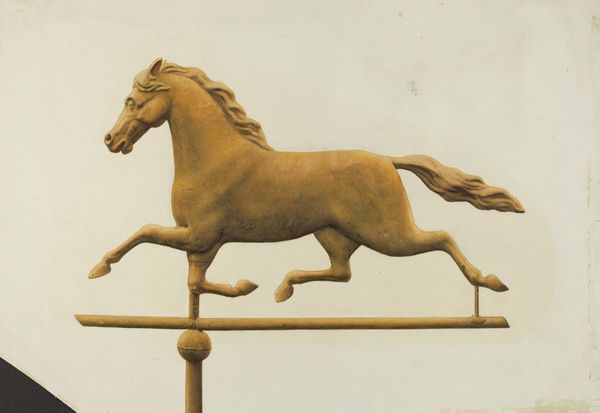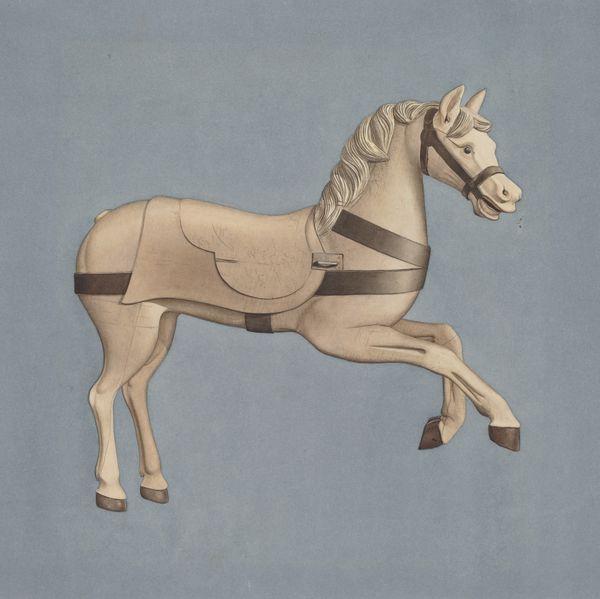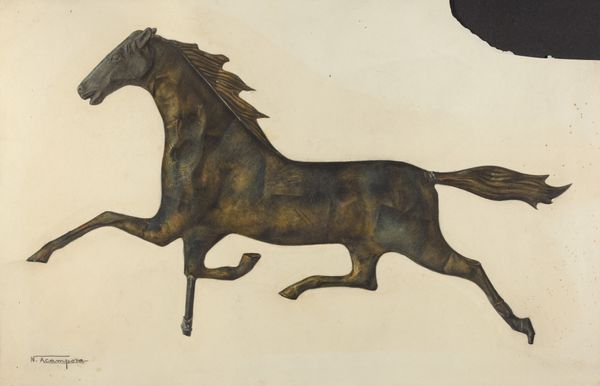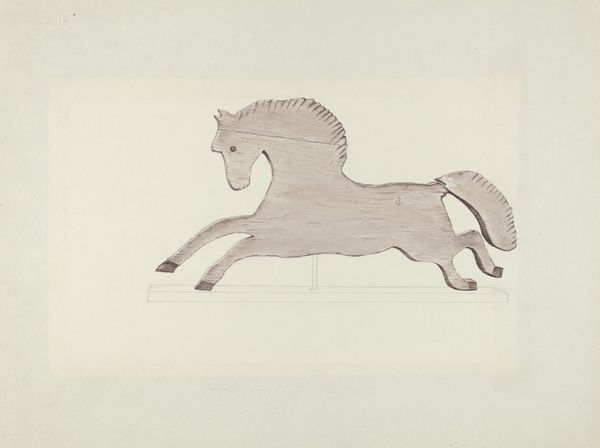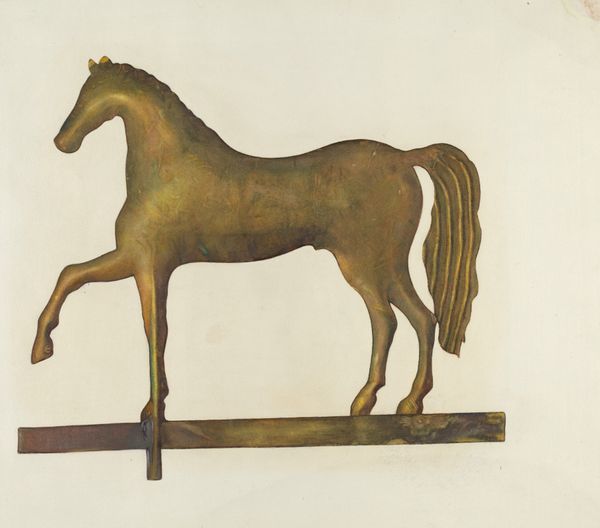
drawing
#
drawing
#
geometric
#
watercolour illustration
Dimensions: overall: 38.1 x 55.9 cm (15 x 22 in.)
Copyright: National Gallery of Art: CC0 1.0
Editor: So, this is Henry Murphy's "Horse Weather Vane," made between 1935 and 1942. It's a watercolor illustration, and what strikes me immediately is the stark contrast between the detailed horse and the almost minimalist background. What do you see in this piece, looking at its formal elements? Curator: Precisely. Observe how the artist has deployed a limited palette—the muted tones of the horse against the flat, serene blue create a tension, wouldn't you agree? The textural contrast between the smooth backdrop and the detailed rendering of the horse invites a certain tactile reading. Editor: I see that, the textural reading! The horse almost feels like it's popping off the page. The geometric quality of the supporting rod also interests me; it feels intentionally simplified. Why do you think Murphy chose to represent the vane in this manner? Curator: Consider the formal aspects of semiotics in art, focusing on symbols and signs to find an alternative view of weather vane depictions and perhaps comment on society at that time. Do the lines offer an architectural stability, acting as a counterbalance to the organic, flowing lines of the horse? The balance here is visually quite compelling. Editor: Yes, the tension between those lines creates movement and stability. Now I’m looking closer, there’s a quietness in the work. Curator: Exactly, a certain quietude arising, I'd argue, from the formal harmony. The geometric simplicity emphasizes and amplifies the expressive nature of this magnificent, powerful horse weather vane, with nothing taken away. A good example of the 'less is more' artistic philosophy. Editor: I now better appreciate the carefully constructed visual relationships, particularly that fascinating intersection between geometry and organic form, and how that reflects a sense of both movement and stillness. Thanks so much! Curator: A pleasure to share that perspective! Focusing on the object in such an arrangement can open avenues to appreciating its deeper artistic elements.
Comments
No comments
Be the first to comment and join the conversation on the ultimate creative platform.
